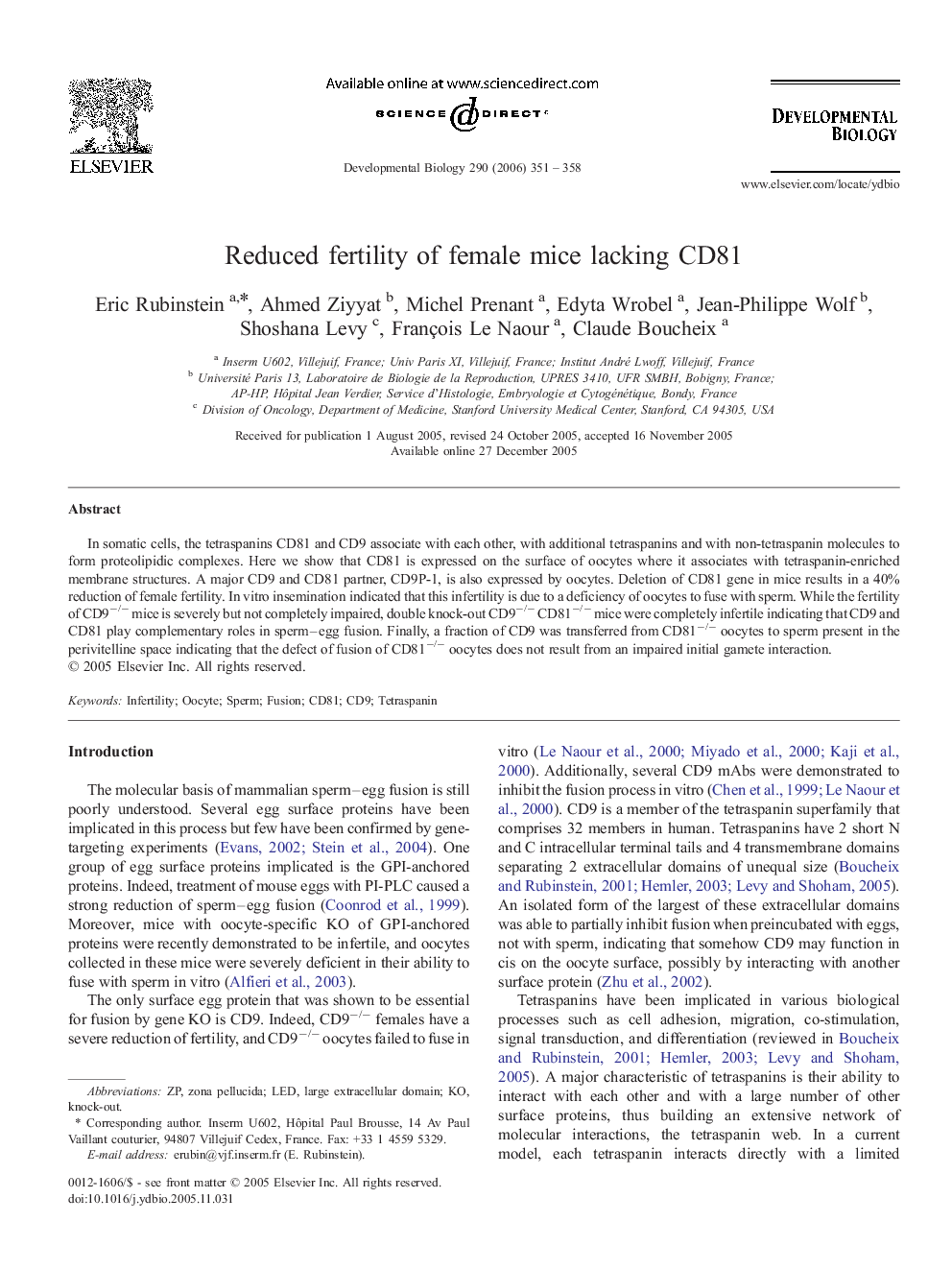| Article ID | Journal | Published Year | Pages | File Type |
|---|---|---|---|---|
| 2176092 | Developmental Biology | 2006 | 8 Pages |
In somatic cells, the tetraspanins CD81 and CD9 associate with each other, with additional tetraspanins and with non-tetraspanin molecules to form proteolipidic complexes. Here we show that CD81 is expressed on the surface of oocytes where it associates with tetraspanin-enriched membrane structures. A major CD9 and CD81 partner, CD9P-1, is also expressed by oocytes. Deletion of CD81 gene in mice results in a 40% reduction of female fertility. In vitro insemination indicated that this infertility is due to a deficiency of oocytes to fuse with sperm. While the fertility of CD9−/− mice is severely but not completely impaired, double knock-out CD9−/− CD81−/− mice were completely infertile indicating that CD9 and CD81 play complementary roles in sperm–egg fusion. Finally, a fraction of CD9 was transferred from CD81−/− oocytes to sperm present in the perivitelline space indicating that the defect of fusion of CD81−/− oocytes does not result from an impaired initial gamete interaction.
